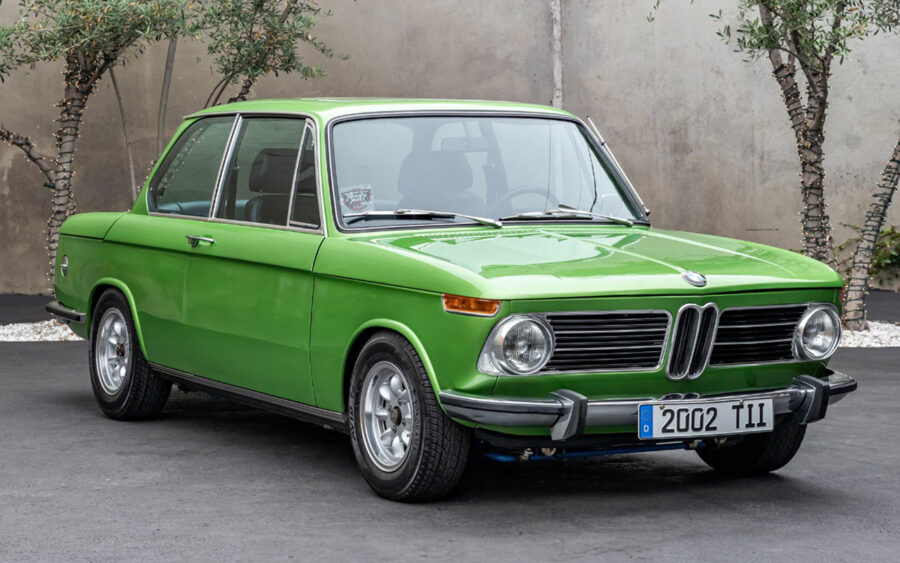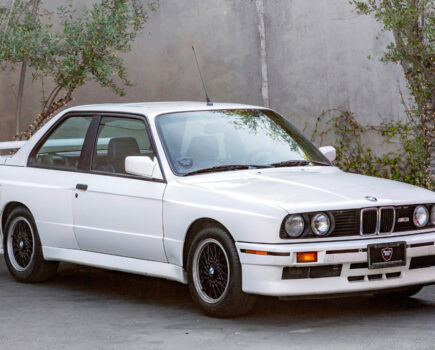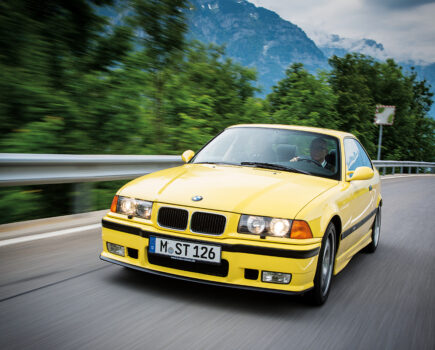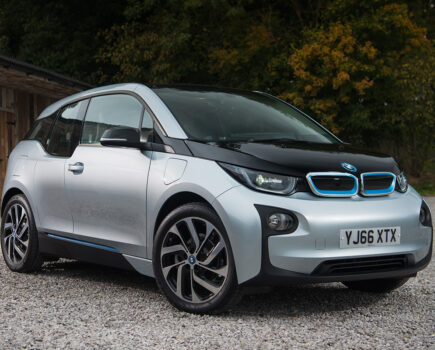An undisputed classic with a dedicated following, the BMW 2002 is an impressively useable 1960s saloon. Here’s how to live with one
Sponsored editorial in association with Beverly Hills Car Club
Introduced in May 1966 as a small, sporty saloon aimed at similar offerings from Opel, Triumph, Alfa Romeo and others, the BMW 02 Series was well received in its native Europe but couldn’t meet US emissions regulations in its original 1600 form. The solution was the 2002, sporting a two-litre M10 engine.
The 2002’s keen chassis was the perfect match for more power, which arrived in 1968 with the twin-carb 2002ti and again in 1971 with the fuel-injected 2002tii in 1973. The standard saloon was joined by the hatchback Touring model in 1971 along with a 1.8-litre option.
Perhaps the most famous go-faster example was the 2002 Turbo, the first turbocharged European production car. Launched in 1973 just in time for the oil crisis, just 1,672 examples were produced.
The 02 range soldiered on even after the arrival of its 3 Series successor in 1975, albeit in basic 1502 form as an entry-level offering to bridge the price gap between the two models. The 02 series finally bowed out with the arrival of the BMW 316.
Today, the car enjoys a keen enthusiast following and plenty of specialist and parts support – great news for prospective owners intent on using their example as originally intended.

Engine, transmission and mechanicals
The venerable BMW M10 four-cylinder sits at the heard of all 02-series cars, with 1.6, 1.8 or 2.0-litre displacements; all are durable iron-block units with alloy heads. These units can manage upwards of 100,000 miles without major attention but regular maintenance is key; incorrect antifreeze or infrequent changes can see the cylinder head crack, for example.
Services are best conducted every 5000 miles or every year if your example doesn’t move much. Cars that spend most of their life around town should be serviced more frequently. Cars with carburettors have a fuel filter that should be changed once or twice per year.
Conversion to electronic ignition is a common quality-of-life upgrade that eliminates distributor problems. Fuel-injected cars can suffer cold start issues due to timer relay problems – wiring in a switch is simple fix that offers manual control over the cold-start injector.
A noisy diff is a common issue on high-mileage cars but changing the oil can help address this. Brakes and suspension are simple and strong, with easily sourced replacement parts available.

Bodywork and interior
Old cars rust and the BMW 2002 is no exception. Be prepared to pay for some welding if you’re not prepared to pay top dollar for a nicely restored car. Rot hot spots include box sections beneath the radiator, metal behind the headlights and the spot where the inner front wing meets the sill below the A-pillar. Sills can also rot out, as can the bulkhead – the latter of which is particularly bad news.
Thankfully, new panels are available so replacement or full restoration should be a achievable provided the car’s basic structure is sound.
Interior quality is good and there’s not much to go wrong. Be aware that some small electric components may be harder to find than the exterior panels and trim parts.

Finding a good example
The BMW 2002 is an old car now, so it’s worth sourcing your example from a reputable dealer to avoid getting bitten by an unexpectedly rotten example. Mechanically the 2002 is a simple proposition perfect for DIY enthusiasts, but specialist attention may be needed for pernickety fuel-injected or turbocharged models.
If you want to maximise your chances of avoiding rust, looking abroad to sunnier climes makes sense. At time of writing, Beverly Hills Car Club has four examples for sale, including the stunning 2002tii you see here. Prices range from $18,750 for a last-of-the-line 1976 model to $44,500 for the 2002tii example pictured.
“The 2002tii is considered by many to be the most desirable 2002 produced by BMW and imported to the United States,” said BHCC owner Alex Manos. “Only 38,703 were produced, as opposed to 339,092 of the standard 2002. Compared to a standard 2002, a tii offers greater performance and overall value.”

Sponsored by Beverly Hills Car Club
The automobiles sold at Beverly Hills Car Club combine all the elements of its exclusive address in Los Angeles: cars for sale that are the very last word in tasteful elegance, chic and impressive sophistication, with careful attention given to each vehicle and each client. Both national and international customers are catered for, with a huge stock of classics to choose from.
For more information and to view the Beverly Hills Car Club stock, visit www.beverlyhillscarclub.com








